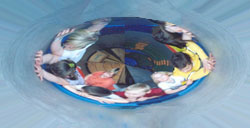An investigation of age and gender differences in preschool children’s specific motor skills
The present study aimed to assess the effect of age and gender on preschool children’s specific motor skills. Three hundred children (154 boys and 146 girls) aged 60 to 71 months, were divided into two age subgroups (60-65 and 66-71 months) and were examined in three motor tasks: bead threading, shape copying and postural stability, assessing visual motor, graphomotor and balance skills respectively.Results showed a significant effect of age in the graphomotor task, with older children performing better than younger ones. As regard gender, girls scored significantly better than boys on both visual motor and graphomotor tasks, while boys outperformed girls on the balance task. The findings are discussed on the basis of biological (different rates of brain maturation and gender differences in brain structure and function) and environmental (opportunities and encouragement) factors that influence motor behavior.






